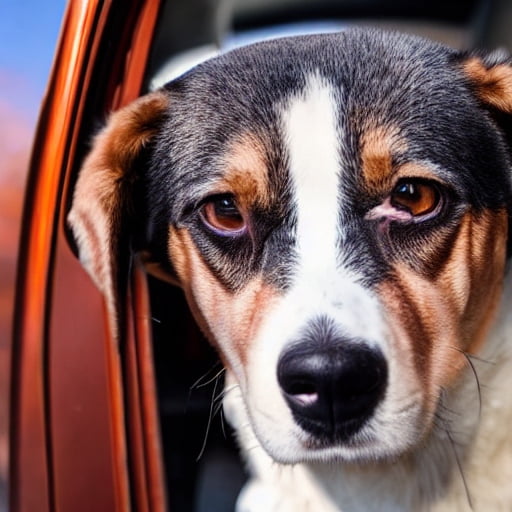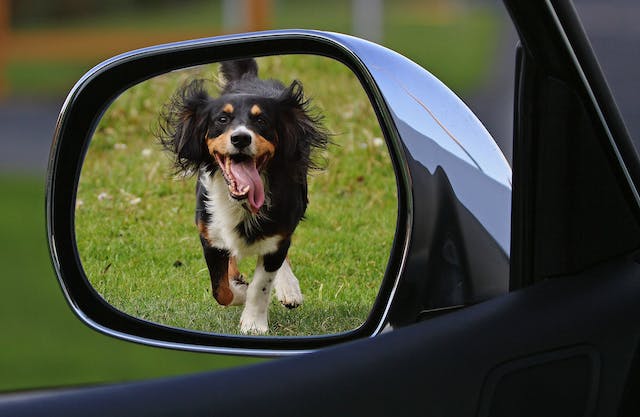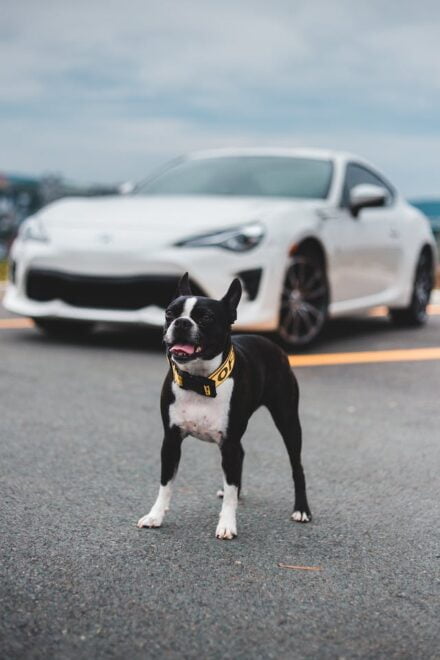
Traveling by car with your faithful dog should be an enjoyable experience for both pet and owner. But the weird noises made by a scared dog in the van might make this encounter seem like an overwhelming task. “Why does my dog cry in the car?” This is a question that many pet parents have. We will delve into the complex world of canine car anxiety in this comprehensive and all-encompassing exploration, carefully examining the various causes of those heartbreaking cries and offering a comprehensive guide to help you and your furry friend understand and make the most of car rides by making them stress-free and enjoyable.
Table of Contents
Why does my dog cry in the car?
Section 1: Canine Anxiety’s Nuances.

We must first understand the complexity of canine emotions and reactivity to new situations in order to understand why dogs are anxious in cars.
Section 1.1: The Physiological Ballet – Motion Sickness.
Canine automobile anxiety is sometimes caused by motion sickness. This section will thoroughly examine the physiology underlying motion sickness, analyzing the function of the inner ear, and offering a variety of useful techniques, such as progressive introduction to motion sickness cures, to ease the discomfort and improve your pet’s travel experience.
Section 1.2: Apprehension about the Unknown Deciphering the Psychology of Dogs.
Dogs rely on habit, and they may get fearful of unfamiliar things, such as automobile rides. The psychological aspects of dread of the unknown will be covered in detail in this segment. It will cover the importance of familiar objects, positive reinforcement, and soothing smells in establishing a safe haven that reduces anxiety in your pet travel companion.
Section 1.3: Resolving Emotional Injuries from Negative Past Experiences.
Dogs’ mental health may be permanently damaged by traumatic events in the past connected to automobile driving. In order to progressively change your dog’s perspective of automobile journeys, we will examine the significant effects of unfavorable prior experiences and provide ideas on how to reestablish trust via tolerance, encouragement, and carefully controlled exposure.
Section 2: Identifying and Dealing with Specific Triggers.

Just like humans, dogs have unique triggers that can cause distress during car rides.The purpose of this section is to carefully decipher these triggers and provide targeted and practical solutions.
Subsection 2.1: Uncomfortable seats or restraints – Creating a comfortable ride
Uncomfortable seats or restraints can turn a potentially enjoyable ride into a stressful experience. This section details the physical aspects of driving with a dog. You’ll also receive guidance on choosing the right restraint system and creating a comfortable movement space tailored to your dog’s specific needs.
Subsection 2.2: Overstimulation Balancing Act
The visual and auditory stimuli of the outside world can overwhelm some dogs. Strategies such as window coverings, controlled lighting, and sensory management techniques are considered in detail to provide a balanced approach to reducing sensory overload and creating a more harmonious travel experience.
Subsection 2.3: Lack of Exercise-Eliminating Restlessness
Energetic dogs may become restless during car rides. This section focuses on the important role of pre-trip exercise, play, and mental stimulation to keep your dog tired and happy, making your trip more relaxed and enjoyable.
Section 3: Practical Strategies to Reduce Dog Car Anxiety.

With a deep understanding of the root causes, this section is a comprehensive collection of practical strategies and training techniques to systematically combat and reduce anxiety. provides a comprehensive toolbox.
Subsection 3.1: Positive Reinforcement and Training – Building a Bridge
Positive reinforcement is an effective way to change a dog’s perception of car rides. Explore a step-by-step guide on how to use rewards and positive associations to reduce your dog’s desensitization to driving by creating a more enjoyable experience that promotes a positive dog-car relationship.
Subsection 3.2: Gradual exposure and socialization – gradually building confidence
For dogs with limited exposure to driving, gradual exposure and positive socialization over time You can build confidence by taking a systematic approach to learning. This section provides a detailed plan for acclimating your dog to the car environment, ensuring that every step is a positive, confidence-building experience.
Subsection 3.3: Temperature Regulation and Comfort – Environmental Adaptation
Environmental factors such as temperature play an important role in a dog’s comfort during car travel. Strategies for regulating temperature and creating a comfortable travel space are explored in detail, highlighting the importance of tailoring the environment to the dog’s specific preferences.
Section 3.4: Sensory Management – Minimizing Distractions
Addressing sensory sensitivities is important to creating a calming environment. In this subsection, you’ll find noise-cancelling devices, soothing music, and more to minimize external distractions, create a calm atmosphere inside the car, and provide your furry friend with a sense of security and comfort. Describes the use of other aids.
Section 4: The Road to a Stress-Free Road Trip

This comprehensive final section summarizes the key insights and strategies discussed throughout the guide and teaches you how to persevere to make your road trip a highlight. emphasizes the importance of empathy and a customized approach. In a fun adventure.
Conclusion:
The path to understanding and alleviating car anxiety in dogs is a thorough examination of the emotional, physical, and environmental factors that contribute to the dog’s distress. By addressing the complex nuances of their behavior, identifying specific triggers, and implementing individualized approaches to training, positive reinforcement, and environmental conditioning, we transform tear-jerking car rides into bonds and shared joy. You can change it in an instant. Remember, the road to a stress-free road trip is a gradual process. But with dedication and a deep understanding of your furry friend, you can easily tackle the open road together and make precious memories along the way.
Why does my dog cry in the car?
Why does my dog cry in the car?
Answer: Dogs may cry in the car due to anxiety, motion sickness, or unfamiliarity with the car environment. Understanding the specific cause can help address the issue effectively.
How can I help my dog feel more comfortable in the car?
Answer: To ease your dog’s anxiety, gradually introduce them to the car in a positive way, using treats and praise. Consider short, enjoyable rides, and use a comfortable restraint system. Additionally, consult with a veterinarian for potential solutions.
Is car anxiety in dogs a common issue?
Answer: Yes, car anxiety is a common problem among dogs. It can develop due to various reasons, including past negative experiences or lack of exposure. Patience, positive reinforcement, and desensitization techniques can be helpful in reducing car-related stress for your furry friend.

One Reply to “Why does my dog cry in the car?”